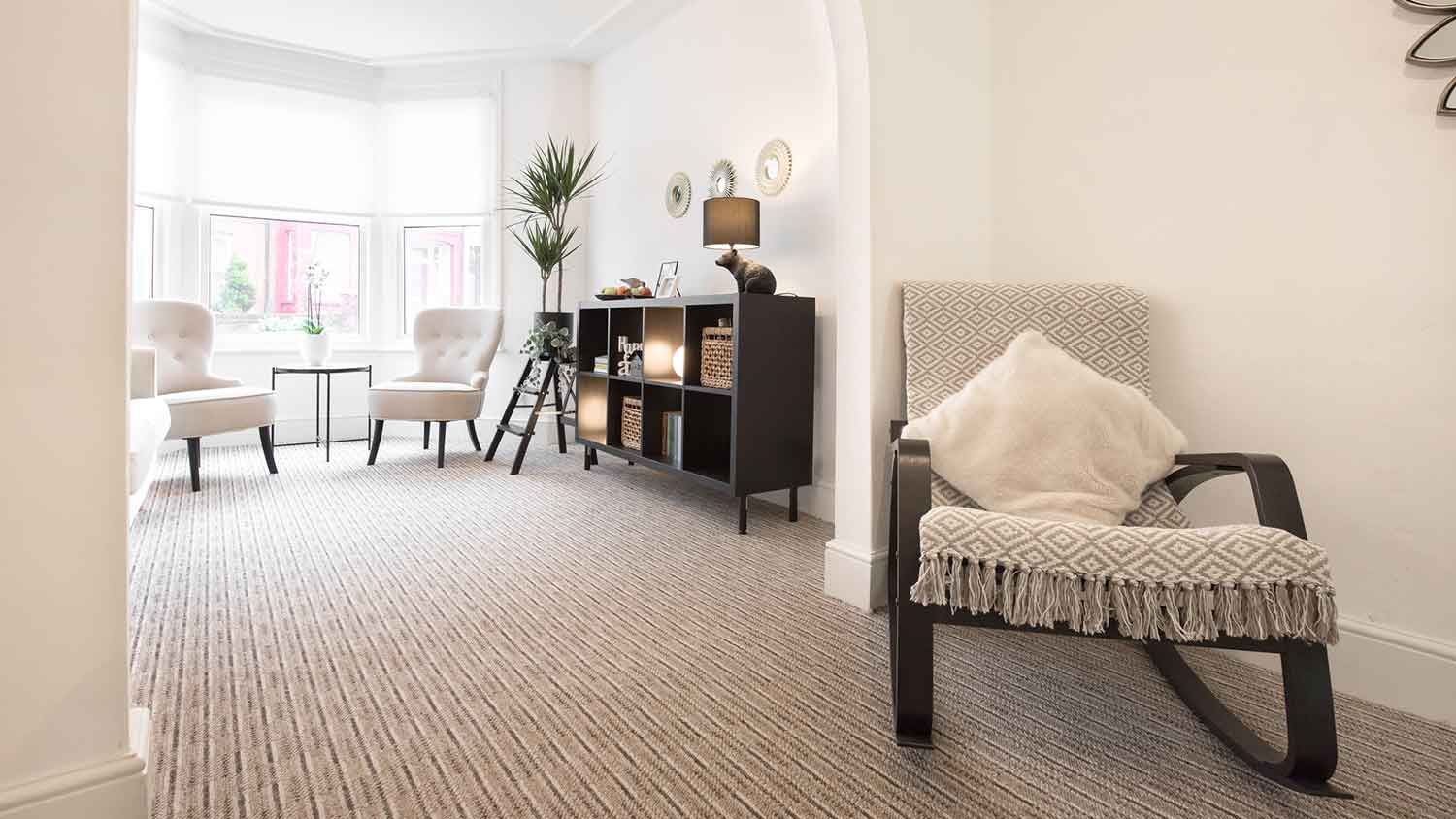
Get a clear estimate for carpet repair cost. Learn what impacts pricing, compare repair types, and find ways to save on your next carpet project.
Shortcut to plushness or future headache?


Issues with laying carpet over carpet include allergens, mold, and poor functionality.
It’s more feasible to lay new carpet over low-pile carpet than over high-pile carpet, but experts still don’t advise it.
You may have a hard time attaching your new carpet to the old tack strips, potentially leading to premature wrinkles and shifting.
This practice may negatively impact the new carpet’s warranty and your home’s resale value.
Flooring updates are a great way to transform your space, particularly if your old carpet is dated or damaged. But can you put carpet over carpet? It's a question that many ponder when aiming for a no-fuss home renovation. While laying carpet over existing carpet is possible, it's not always the best choice, and there are several risks to consider before moving forward. Let’s explore the possibilities, potential issues, and best practices when planning this carpet installation project.
If you're contemplating putting carpet over carpet, you may have valid reasons, such as avoiding the excess labor and cost of carpet removal, expediting the flooring project, or preserving the original carpet for whatever purposes. However, there are significant drawbacks and potential risks associated with this approach, which is why you’ll have a hard time finding a local flooring pro to give you a thumbs-up.
One of the primary concerns with installing new carpet over old carpet is the trapping of allergens. Dust, dirt, debris, and mites trapped in the old carpet can seep through the new carpet, exacerbating allergies and respiratory issues for sensitive individuals. Fully removing the old carpet before installing new carpet gets rid of these excess allergens that have been trapped there for years so that you can get a fresh start.
Moisture retention between the layers can also create a breeding ground for mold and mildew in your carpet, posing health risks, emitting unpleasant odors, and causing damage to both the carpets and underlying flooring.
Layering carpets can increase the height of your floors, potentially causing issues with door clearance and partially obstructing vents. This could lead to annoyances as well as reduced functionality and comfort in the room.
Uneven spots and wear in the old carpet can persist even after installing new carpet, creating tripping hazards. This is especially true in high-traffic areas and transitions between rooms where the carpet layers may vary in height.
Old carpets lack the ideal base for new carpet, potentially causing premature wear and tear on the new carpet. Additionally, friction from doors scraping against the carpet can damage the new carpeting, diminishing its longevity and aesthetics.
Installing new carpet over high-pile carpet presents challenges in ensuring proper stretching and attachment with tack strips. Improper installation can result in wrinkles or movement in the new carpet sooner than you may like.
By forgoing the removal of old carpet, you miss the chance to have a pro inspect and address underlying subfloor issues. Hidden wear, damage, or mold can compromise the integrity of the new flooring.

Installing new carpet over low-pile carpet is more feasible than installing over high-pile carpet. Why? Low-pile carpet has a thinner profile and is easier to clean and dry. However, pros still recommend that you remove the old carpet for optimal results and longevity of the new flooring.
For those determined to install new carpet over old carpet (again, we do not recommend it), here are some essential tips to mitigate potential issues:
Have the old carpet professionally cleaned to remove dirt and allergens.
Use a thin underlayment to provide a suitable base for new tack strips.
Trim a few inches of the existing carpet around the room's perimeter to accommodate the new tack strips.
Consider using concrete nails as an alternative to tack strips for enhanced stability.
Enlist the help of a local carpet installer who will be able to assess your old carpet and ensure the job is done correctly.
From average costs to expert advice, get all the answers you need to get your job done.

Get a clear estimate for carpet repair cost. Learn what impacts pricing, compare repair types, and find ways to save on your next carpet project.

Carpet padding makes your carpet feel extra comfortable and protects your floors from damage, but how much does carpet padding cost? Let’s look at the numbers.

Discover how much carpet replacement costs based on factors like the project size, the carpet material, and the labor required.

Wondering how much carpet stretching costs? Get prices, key cost factors, and tips to help you budget for your carpet stretching project.

If your carpet has seen better days, it might be time to give it some TLC. These questions to ask your carpet installer will help you prepare for the project.

Find out the average berber carpet installation cost, key price factors, and expert tips to help you budget for your new carpet project.